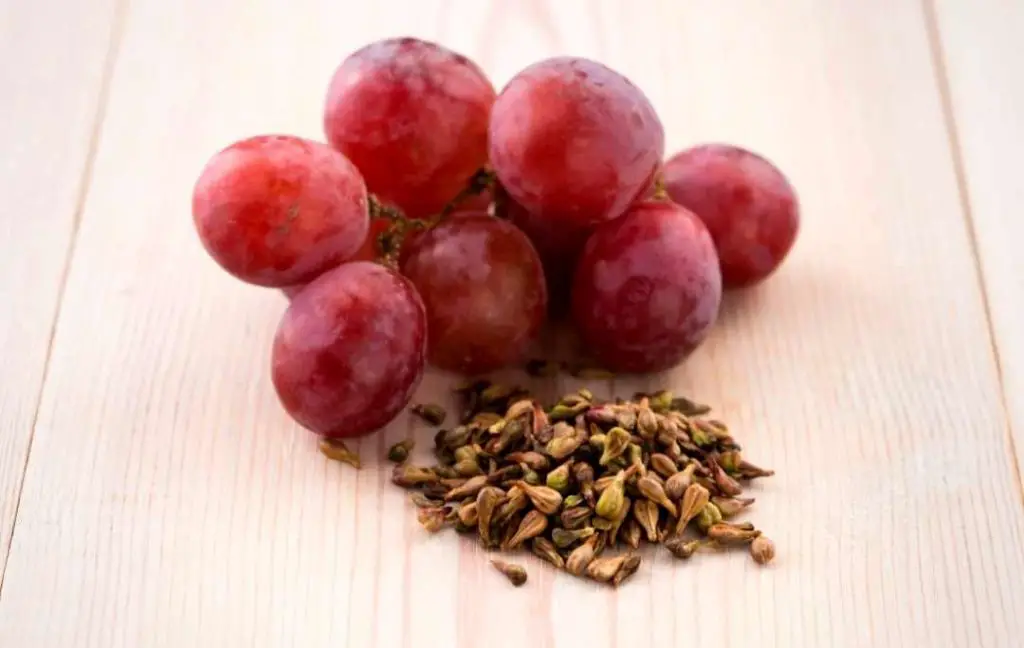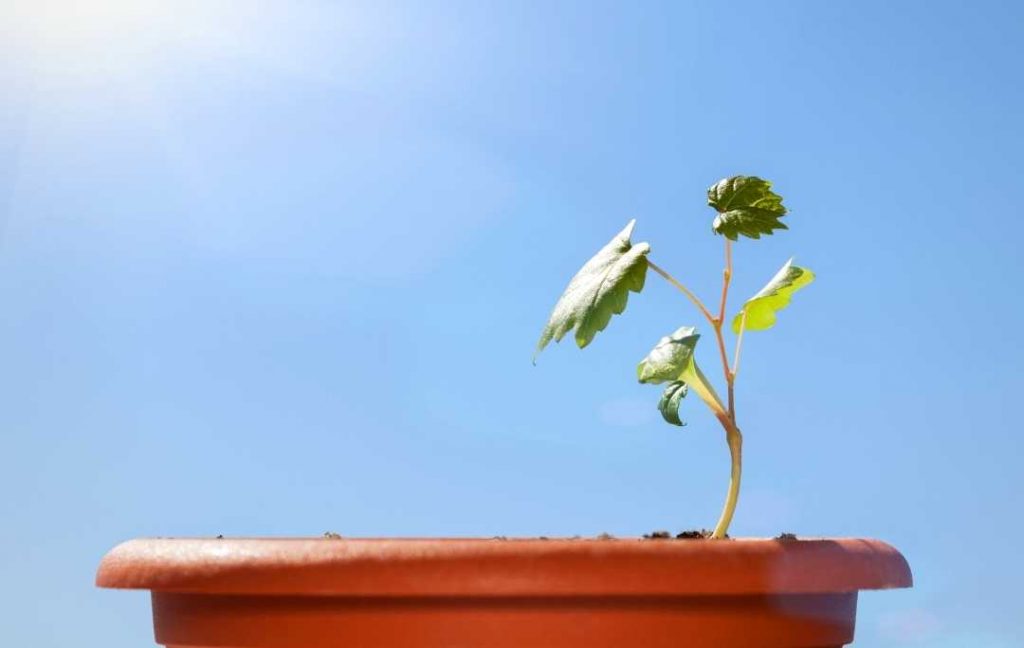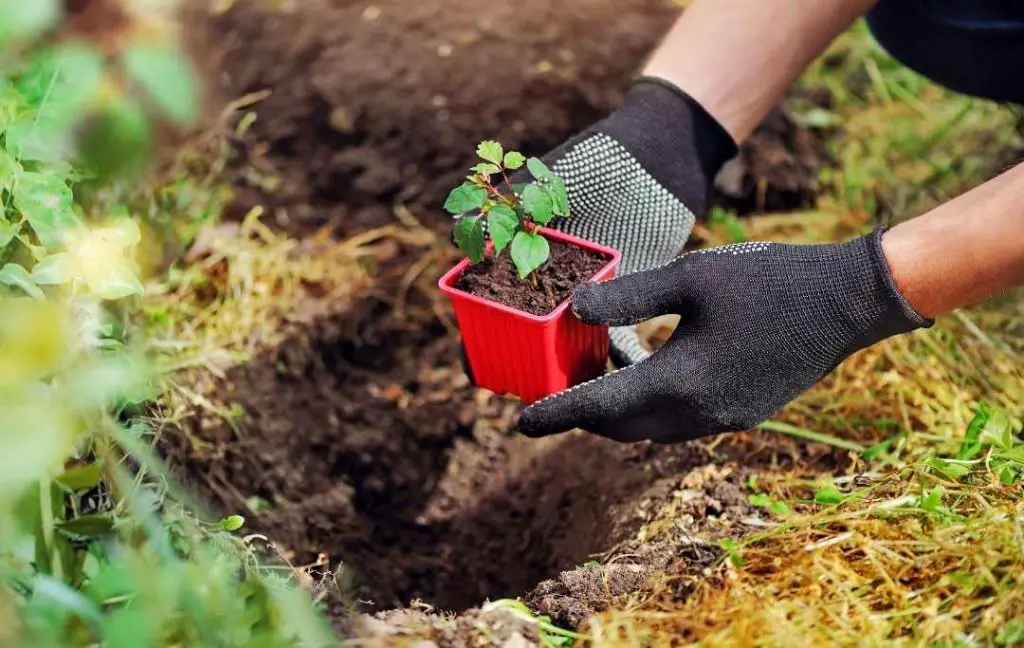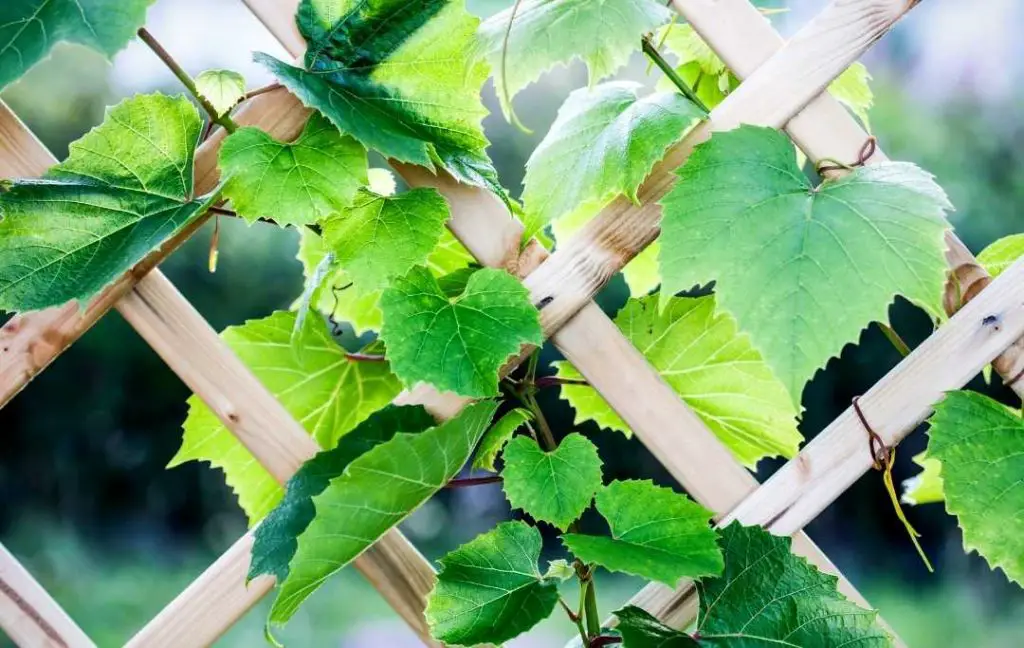The vines of grapes are very attractive and useful. You cannot only use grapes for eating, juicing, and winemaking but they are also used as ornamental plants in your garden.
It is a versatile fruit that can add an element of drama to any growing area. With proper care and attention, it will give you fruit within a few years and last for 30 years or more.
There are different ways of planting growing in your garden. Generally, grapes can be propagated through cuttings for grafting methods. You can also grow grapes from seeds but in this method, your determination and patience are needed.
Simple Steps Of Growing Grapes From Seeds

Both seeded and seedless varieties of grapes are found. If you want to grow seedless grapes then you should propagate them by any means other than seed.
On the other hand, seed variety has viable seeds and you can plant them in autumn and get seeds in Spring. Before sowing the grape seeds, they need a little cold stratification. This process is very important because exposure to the cold temperature will cause the seeds to break out of dormancy.
But the vines which you grow from seeds are not the same variety as the parent vine. It will take you too much time and after 2 to 3 years you will find what the grapes taste like.
If the fruit which you get from the seeds may not be edible then all your effort will be lost. Most gardeners suggest that we should not grow grapevines from seeds.
In this article, we are going to discuss all the steps for growing grapes. If you follow all these steps then you will get fresh and juicy grapes at your home.
Step 1: Selecting The Seeds

If you want to get success in growing grapes then you should choose the right variety. Following are the simple tips you should keep in mind before selecting the variety.
- Remember, the variety should be according to the purpose for which you are growing grapes. For example, graphs can be used for eating, for making fruit jam or you can enhance the beauty of your garden by adding grapevines.
- The variety you choose should be according to the climate in which you are living. You can get all the information from the local nursery or gardening store.
Step 2: Obtain The Grape Seeds
After you choose the variety which you want to grow, the next step is to get the seeds of that variety. You can buy the seeds from a local nursery or ask another gardener.
Step 3: Test The Seeds That Are Viable
Before sowing the seeds you should examine whether they are healthy and in good condition.
- Take the seeds and squeeze them gently with your fingers if the seed is healthy then you will feel it firm.
- Examine the color of the seed. Healthy grape seed has a grey or white endosperm under the seed coat.
- You can also perform a simple experiment to check the seed. Take water in a bowl and put all the seeds in it. The seeds that are healthy and viable will sink at the bottom of the bowl. The seeds that float are not healthy so you should discard them and don’t use them for growing purposes.
Step 4: Prepare The Seeds
Take the viable seeds and wash them with water so if they have any pulp or other matters then they will be removed. Now soak the seeds in a small amount of distilled water for 24 hours.
Step 5: Stratify Your Seeds
Cold and moist conditions are required for the germination process of many seeds. Naturally, the seeds require this when they sit on the ground over the winter.
You can create these conditions through the process of stratification. As we are growing grapes seeds so the best time of stratification is in December.
- Take an airtight bag and fill it with peat moss. Peat moss is a good option for grape seeds because it has antifungal properties which help to eliminate the seed damaging mode.
- Now put the seeds in the peat moss of an airtight bag.
- Now refrigerator the seeds at a temperature of 35 to 40-degree Fahrenheit. A refrigerator is a good place for the stratification process. This process will take two to three months.
Step 6: Plant The Grape Seeds
When the spring season comes, take out seeds from the refrigerator. Take pots and fill the pot with high-quality soil. Don’t use garden soil, high quality potting soil has all the nutrients which are necessary for the germination of seeds.
Make sure, the pot has drainage holes because it is necessary for the health of your plants. Plant the seeds in the pots.
- Place the pot in a warm area so the seeds will germinate quickly. The daytime temperature should be at least 70 degrees Fahrenheit or 20 degrees centigrade. At night, the temperature should be around 60 degrees Fahrenheit or 15 degrees centigrade. You can also start the growing season earlier if you keep the pot in a greenhouse or inside your home. You can also use warming mats because they will maintain the correct temperature for the grape seeds.
- Moist soil is needed for the germination of grape seeds. But make sure your soil should be moist but not too wet. Whenever you see the surface of the soil is dry then water the grape seeds. Regularly check the growth of the seeds, typically the grape seeds sprout within 2 to 8 weeks.
Step 7: Transplant The Young Seedlings To Larger Pots

When you see the seedlings become 3 inches or 8 cm tall then you can transplant them to larger pots. The diameter of the pots should be 4 inches or 10 cm.
You can keep the seedlings inside your home or in a greenhouse until the height of the seedlings reaches 12 inches or 30 cm. Because 12 inches long seedlings have a well-established network of roots. Make sure the seedlings have at least five to six leaves before transplanting them outside.
Step 8: Moving Your Grapevines Outdoors

Now, this is the time to move your grapevines outdoors in your garden or backyard.
- First, you have to choose a good location for your grapevines. Plants need the right amount of sunlight. 7 to 8 hours of sunlight is needed for best results. For the proper growth make sure the sunny spot has well-drained soil.
- After choosing the location you should prepare the soil. If your garden has clay or poorly drained soil then use compost, sand and other amendments to increase the drainage.
- Before transplanting you should check the pH of the soil. The grapes plants need a pH between 5.5 to 6.0.
- Spacing is very important during transplanting. the selected location must have plenty of space. For proper growth, your plants should have ample space. If the plants get adequate space then they get sufficient air.
- For each grapevine, you should dig a hole in the soil which is 12 inches deep and 12 inches wide. Fill the hole with 4 inches of topsoil. The roots of the vine plants will cover 6 inches of the hole and tamp down. Fill the remaining hole with soil but don’t tamp down.
- Water at the time of planting so the roots of plants will be established in the new environment.
Step 9: Fertilize Your Grapes After Planting
After transplanting the grape plants, they need a small amount of 10-10-10 fertilizer to the soil but around the base of your young plants. In each spring you should repeat this process regularly every year.
Step 10: Properly Support Your Grapes

Grape plants are included in those plants which need support for growing straight upward. For proper support, you can install a strong structure like a trellis.
After the installation of trellis, your plants get proper air, and harvesting of the fruit becomes easier. You can use stakes during the first two years when your grapevines are small. Stakes will provide sufficient support to the plant and keep them off the ground. After that, you will need to train the plants to the trellis.
Read More
- HOW TO GROW CHERRY TREE INDOORS?
- HOW TO MAKE NATURAL & SAFE HOMEMADE WEED KILLER?
- HOW TO GROW ROSEMARY FROM CUTTINGS IN WATER?
Take Proper Care Of Your Plants
After three years the wine will start producing fruit. During this period grapevines need proper care and training.
Year One: Carefully examine the growth of the grapevine. Choose the three strongest roots on the plant and allow others to grow. Pinch off all other shoots, in this way, the three remaining shoots will grow stronger and produce healthy fruit.
Year Two: In the second year you should use balanced fertilizers. If you see any flower clusters then remove them as they emerge. The reason is that at the start the plant should use its energy for growing strong rather than producing fruit.
Year Three: You should continue fertilizing and removing low buds and shoot during the third year. You should allow a few flower clusters to produce fruit this year.
Year Four and Later: You should continue fertilizing and pruning in the fourth year and afterward, now you can let all the flowers cluster fruits.

Pruning Grapes
Pruning is very important because it gives your plant a proper shape otherwise grapevines will grow wildly. The other benefit of running is that you will get a lot of new growth of plants.
The best time for pruning is late winter around March. During the first year, you should wait for winter for pruning. The reason is that we have to wait for the establishment of a strong root system.
How To Harvest Grapes?

- When you see the rich color, juicy and full-flavored grapes, it means they ready to eat. The bunches of traps are tightly attached to the stem. You can pick different grapes as a sample from different clusters and taste them. If you feel that taste is sweet and tart then picks the bunches from the vine.
- If you see the grapes are not ripening then you should pinch back some of the foliage to let the light.
- If you picked the grapes from the vine then they will not continue ripening.
How To Store Grapes?
- You can store grapes for up to 6 weeks.
- Don’t store them with other fruits and vegetables because grapes can absorb the odor of them. It is suggested that you should keep them separate.
- You can use cardboard boxes or crates which are lined with clean and dry straws.
Read More
